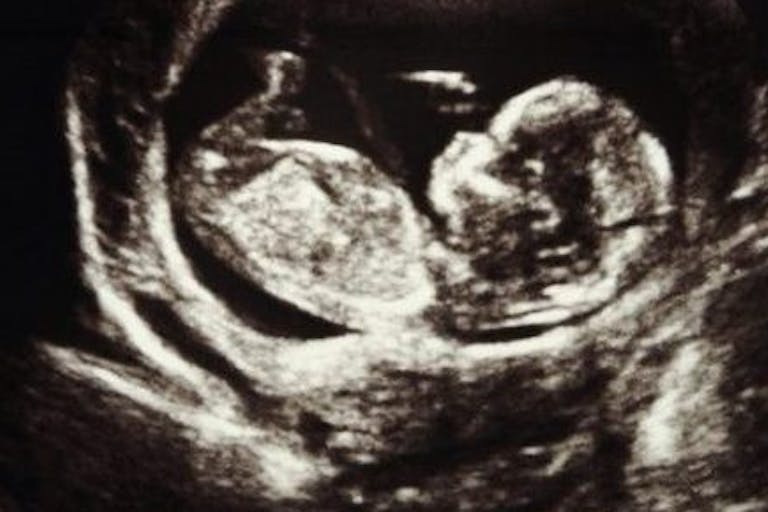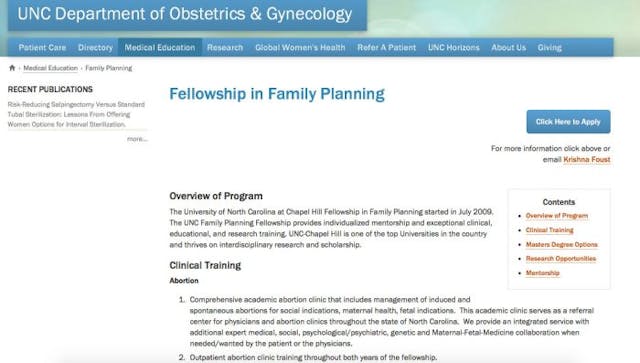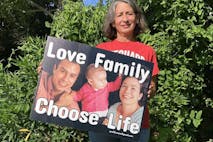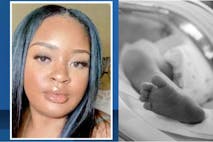
Details shrouded in secrecy as third woman in a month is injured at Rhode Island Planned Parenthood
Bridget Sielicki
·
AMA Journal of Ethics hit piece on pregnancy resource centers riddled with problems
In March of 2018, the American Medical Association Journal of Ethics published what amounts to a hit piece on pregnancy resource centers, claiming that these pro-life centers, which offer all their services completely free of charge, are unethical, and actually “undermine[] women’s health.” But the assertions made in this article, titled, “Why Crisis Pregnancy Centers are Legal but Unethical,” are misleading at best, and downright deceptive at worst. For the sake of space, let’s examine just a handful of the problems with this article:
Problem #1: Doctors who kill human beings for a living really are in no place to judge the ethics of pregnancy centers which hope to save lives.
In the piece’s abstract, the authors, Amy G. Bryant, MD, (an Assistant Professor) and Jonas J. Swartz, MD, (a Fellow) both OB/GYNs in the Family Planning department at UNC-Chapel Hill, state with disdain that pregnancy resource centers have a “religious ideology” which they claim “takes priority over the health and well-being of the women seeking care at these centers.” If this sounds like a jaw-droppingly biased claim from the outset, which sets the entire tone of the piece, that’s because it is and it does. And it’s completely untrue. But what can we really expect from an instructor and a fellow in the UNC Family Planning Department, where abortion training is the first thing listed as part of its Fellowship in Family Planning and where the “academic clinic serves as a referral center for physicians and abortion clinics throughout the state of North Carolina”?

The UNC Family Planning Fellowship document, by the way, makes sure to offer its doctors training in how to kill children — but doesn’t offer training in how to deliver them alive and healthy. The document states, “If a Fellow definitely wants to be able to include obstetrics in their clinical practice during fellowship then UNC is probably not the best choice.” If that isn’t getting straight to the point, I don’t know what is. These authors are extremely pro-abortion. One is a Family Planning instructor, and one is a Fellow receiving training in abortion.
Live Action News spoke with former Planned Parenthood medical director (and former abortionist turned pro-life convert) Kathi Aultman, who stated in response to this article, “I have never read an article that so blatantly depicted good as evil and evil as good. As an OB/Gyn physician and a former member of the Ethics Committee of the Christian Medical and Dental Associations, I am appalled that this article was published in an ethics journal.” She added, “These authors are either totally unfamiliar with what goes on in these centers or they have an underlying agenda related to the abortion industry.” Considering that the authors are an abortionist trainer and trainee, perhaps it’s both.
Problem #2: Despite their effort to paint pregnancy resource centers in a bad light, the authors end up pointing out the centers’ benefits for women and families.
The abortion-supporting authors point out — as if it’s a bad thing — that the mission of pregnancy centers is “to prevent abortions by persuading women that adoption or parenting is a better option.” Hear me now: Adoption and parenting are always better options than killing children. Period. As Aultman stated to Live Action News, “When did it become evil to provide free help to women in need, and good to ‘protect’ women from information and material assistance that might enable them to keep their baby? When did it become evil to save lives and prevent injury and emotional distress?”
Oddly, the authors list all that pregnancy resource centers offer to women, yet take issue with the centers’ “neutral-sounding language” when they “offer to help women with free pregnancy tests, ultrasounds, testing for sexually transmitted infections, and counseling on ‘all options’ for pregnancy. In addition, pregnant women are often offered resources such as maternity clothes, diapers, and parenting classes” along with a form “to enroll in prenatal care or to apply for government assistance with medical care (e.g., Medicaid or the Special Supplemental Nutrition Program for Women, Infants, and Children).”
But here we find the authors’ real issue: “Because centers are sometimes located close to abortion clinics and have names and logos similar to nearby abortion clinics, women could mistakenly seek care there rather than at the intended clinic.” Ohh, now I get it…. The authors believe “neutral-sounding language,” or using a name like “Women’s Center” (or something similar) is deceptive when a pregnancy center does it, because women might not get abortions if they go there! (Question: How many abortion facilities actually have the word “abortion” in their names? Get back to me on that….)
READ: Debunking Planned Parenthood’s false claims about pregnancy centers
“CPCs, as a rule, not only discourage abortion but also refuse to provide referrals to abortion clinics,” the authors state. But as Aultman pointed out, no one needs a referral to get an abortion, adding, “If a patient mistakenly thought a CPC was an abortion provider it would be very easy to turn around and walk out.” And she’s right. But this is not always the case at an abortion facility, where many women have stated they were coerced into abortion.
On the business of referring for abortion, Aultman said, “It would be unethical to force a person who believes that abortion takes the life of a human being, to recommend that procedure” — yet that’s exactly what some states are attempting to do. The AMA authors praise these attempts to force state-sponsored speech by a private entity, writing, “A ruling by the Supreme Court in favor of CPCs could definitively hamper efforts to curb deceptive practices by considering them free speech. This would be unjust because of the harms to women incurred by inaccurate information…. The safety and well-being of women seeking abortion or any reproductive health care should take precedence over free speech, particularly when exercising that right can harm patients.”
What information do the authors deem “inaccurate”? That abortion harms women? That it has physical and emotional risks? That it kills an already conceived, living and developing human being and not just a blob of tissue?
Kathi Aultman noted that the real harm to patients is done by abortion. “As a practicing OB/Gyn of over 35 years and as someone who used to do abortions, I can tell you that women do suffer emotional consequences after an abortion. In fact, unlike what I was led to believe, women who kept their unintended pregnancies tended to do much better than those who chose to abort them. My experience from years of practice, my own experience of having an abortion and the experiences of friends and acquaintances has shown me that a woman cannot remain unscathed after killing her child.”

Problem #3: The authors seem oblivious to the fact that many of their criticisms of pregnancy centers could apply equally to abortion facilities.
Licensing/regulation
Article continues below
Dear Reader,
In 2026, Live Action is heading straight where the battle is fiercest: college campuses.
We have a bold initiative to establish 100 Live Action campus chapters within the next year, and your partnership will make it a success!
Your support today will help train and equip young leaders, bring Live Action’s educational content into academic environments, host on-campus events and debates, and empower students to challenge the pro-abortion status quo with truth and compassion.
Invest in pro-life grassroots outreach and cultural formation with your DOUBLED year-end gift!
Authors Bryant and Swartz claim pregnancy centers “strive to give the impression that they are clinical centers, offering legitimate medical services and advice, yet they are exempt from regulatory, licensure, and credentialing oversight that apply to health care facilities.”
The authors left out something important in this criticism: Abortion facilities have, for decades, had a minuscule amount of oversight themselves, and they’re doing surgeries on women. Aultman noted that the authors “say nothing about the fact that many abortion clinics operate without the same regulations and oversight than a surgery center, despite the fact that they are performing potentially life-threatening procedures.” Only in recent years have states begun to crack down on this largely unaccountable industry.
Even first trimester abortions have risks. Cree Erwin-Sheppard died in 2016 from her first-trimester abortion at a Michigan Planned Parenthood. Former abortionist Dr. Anthony Levatino explains the procedure in the video below:

But there’s another problem with the AMA authors’ claim: pregnancy centers do offer legitimate, limited medical services. While the authors claim pregnancy resource centers don’t have licensed medical professionals on staff, the truth is that medical PRCs are under the supervision of actual physicians, and often have other medical professionals on staff. Despite this, the authors insist that pregnancy centers “propagat[e]… misinformation” and only (emphasis added) “purport to provide medical advice.” That must be news to the doctors and nurses who work at medical pregnancy centers.
In addition, just because the pro-abortion AMA authors don’t like the medical advice given out by pregnancy centers doesn’t mean that these centers are deceptive, said Aultman. “All medical literature is controversial, and every theory has its advocates and opponents,” she noted. “Just because CPCs don’t agree with abortion providers on all of the literature doesn’t make them unethical, especially when the bulk of that literature has been written by abortion providers or advocates.”
Targeting of minorities
The AMA authors seem to imply that pregnancy centers are in minority neighborhoods in order to target minorities — but they fail to mention that pregnancy centers often try to find locations near abortion facilities, so that they can try to reach women who are at highest risk for abortion. If anyone’s targeting minorities, said Aultman, it’s abortionists. “Those are the women who need the most help and who are under the most pressure to abort because of their limited resources,” Aultman told Live Action News. “That is also where most abortion clinics are located. Racism is intimated, and yet I would suggest that the abortionists target minorities. It is a sad fact that in NYC more black babies are aborted than are born.”
Problem #4: The authors are against regulating the abortion industry, but want pregnancy resource centers held accountable.
The AMA authors claim that abortion facilities “receiv[e] no federal and often no state funding” (tell that to Planned Parenthood, which gets about half a billion from taxpayers annually). They also complain about “waiting periods [and] gestational age limits” and other laws regulating abortion providers. They go on to lament some states’ requirements for informed consent and the idea of having to tell a woman that she has a right to see a “real-time image[] of the fetus and hear the heartbeat” at a place that provides ultrasounds for free (which abortion facilities don’t do). Let’s face it: the abortion industry doesn’t like any law that restricts or regulates it as an industry in any way, and these authors simply reinforce that fact.
Kathi Aultman told Live Action News that there’s a reason for these regulations on the abortion industry. “There must be a voice for women to counter the billion-dollar abortion industry whose misinformation to patients is notorious,” she said. “This has been so egregious that several states have mandated what the clinics must tell patients regarding the abortion procedure, its risks, and the gestational age of the baby. Despite that, women are still told things like, ‘the state says I need to tell you this, but it isn’t true,’ or ‘I don’t agree with it.’ Abortion providers are infamous for telling women that their pregnancy is just a ‘blob of tissue’ or ‘no bigger than a pinhead.'”
After all, she adds, “It is to the abortion industry’s monetary advantage to do as many abortions as possible and to convince women that abortion is their best choice, glossing over the complications and risks….”
Planned Parenthood is the abortion industry leader — the “gold standard,” so to speak. And its employees have been caught lying to women:

Women deserve to have real information before they decide on their pregnancy options. So where are they going to get it? Not from the abortion industry, but from those allegedly “unethical” pregnancy resource centers — along with limited health services, friendship, support, and material help.
Aultman summed up her feelings on the AMA article for Live Action News, noting that the Journal of Ethics authors have things completely backwards:
The authors quote four fundamental principles widely recognized as guides to practice: beneficence, nonmaleficence, respect for autonomy, and justice — and then go on in a very twisted way to describe how pregnancy centers violate these principles. But I would give different answers than they did:
Beneficence requires that treatment and care do more good than harm. The abortionist encourages the woman to kill her child. CPCs provide education and emotional, material, and spiritual support without coercion that may allow a woman to keep her baby.
Nonmaleficence, or the idea that health care providers should “do no harm.” The abortionist takes a life and puts women at risk of physical and emotional complications that may affect them for the rest of their lives. CPCs save lives and support women so they don’t feel forced into having an abortion because of circumstance.
Respect for autonomy. Abortionists assume they know best what women should do about an unintended pregnancy. They are to poor or too young or too old to have a child. They certainly don’t take into account the autonomy of the child. The CPCs give women the tools they need to forge their own destiny despite their circumstances.
Justice. What is just about killing a child, or a woman being forced to have an abortion because she can’t afford to care for her baby? The CPCs level the playing field, allowing women, who without their help would be forced to choose abortion, to keep their children.
The bottom line is that the AMA Journal of Ethics article really is nothing more than a hit piece meant to lash out at what the abortion industry views as its greatest enemy: pregnancy resource centers.
Live Action News is pro-life news and commentary from a pro-life perspective.
Contact editor@liveaction.org for questions, corrections, or if you are seeking permission to reprint any Live Action News content.
Guest Articles: To submit a guest article to Live Action News, email editor@liveaction.org with an attached Word document of 800-1000 words. Please also attach any photos relevant to your submission if applicable. If your submission is accepted for publication, you will be notified within three weeks. Guest articles are not compensated (see our Open License Agreement). Thank you for your interest in Live Action News!

Bridget Sielicki
·
Analysis
Cassy Cooke
·
Analysis
Cassy Cooke
·
Analysis
Cassy Cooke
·
Analysis
Cassy Cooke
·
Analysis
Nancy Flanders
·
Human Interest
Kelli Keane
·
Activism
Kelli Keane
·
Politics
Kelli Keane
·
Human Interest
Kelli Keane
·
Abortion Pill
Kelli Keane
·